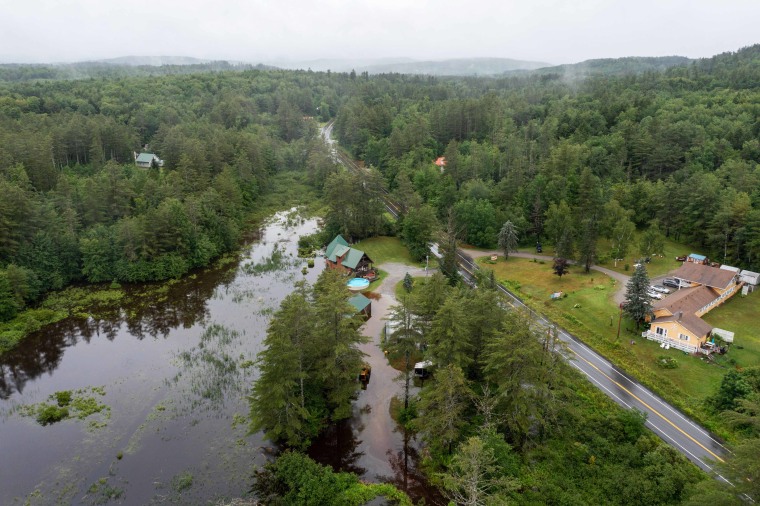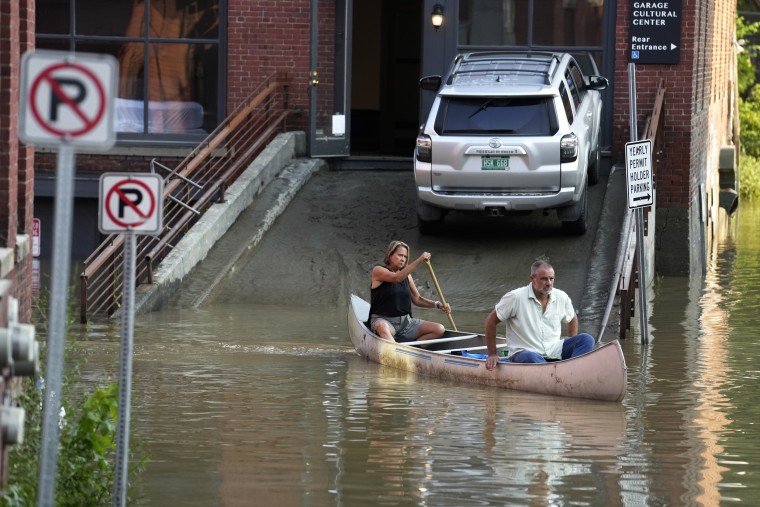The storms that slammed parts of Vermont last week with more than 8 inches of rain and led to widespread flooding have invigorated calls from local environmentalists to restore wetlands they say can provide environmentally friendly protection for communities across the state.
A proposal introduced in the Legislature this year calls for expanded protections, enhancement and growth of wetlands areas to produce a net gain of wetlands acreage. Wetlands can play a crucial role in flood control by absorbing excess rainwater and reducing the risk of downstream flooding. They store water during heavy rain events and can protect surrounding communities. Climate resilience experts consider wetlands to be critical green infrastructure.
Climate advocates have been advocating for years at the state level for legislators to take a more serious look at protecting and rebuilding the state’s wetlands. Vermont has lost 35% of its wetlands acreage since the Industrial Revolution. In 2021 the state implemented an ambitious climate action plan that calls for investments to ensure the resilience and viability of Vermont’s farms, forests and natural lands. Since then, legislators have stopped short of enacting policies that would move the needle on many of the adaptation recommendations.
“They are not acting in a serious way per their funding priorities,” said Jon Groveman, the policy and water program director for the Vermont Natural Resources Council. Groveman and other environmental activists are lobbying for policies that would grow and expand the state’s wetlands, rather than just work to protect what is left.

Groveman said opposition to the proposal has come mostly from developers who don’t want restrictions on where they can build.
A 2016 University of Vermont study found that wetlands and floodplains protected Middlebury from as much as $1.8 million in flood damage during Tropical Storm Irene in 2011.
“There’s always tension when it comes to development and economic growth,” Groveman said. “But I think it’s clear that it’s not good for anyone to develop in these wetlands areas. As storms get more frequent, we’re going to see major costs associated with flood damage. There is a serious need to better protect wetlands and the land along rivers and streams.”
Many communities in Vermont are working to figure out how much of their lives and livelihoods they can piece together after the floods.
Joie and Tony Lehouillier, who run Foote Brook Farm in Johnson, said they lost 80% of their crops and a majority of their farm equipment. Their lower fields flooded when the banks of the Lamoille River overflowed overnight Sunday.
“On Monday night we realized we’d lose lettuce and onions and went to bed, but when we woke up, everything on our lower fields was gone,” Joie Lehouillier said.
The Northeast Organic Farming Association said 100 farmers have reported similar devastation. It’s still early in the assessment phase, but the association said damage are likely to exceed $10 million and create food insecurity for hundreds of people across the state. In addition to the damage, floodwaters carried heavy metals, sewage and other contaminants onto land, affecting farmers’ ability to plant new crops until soil tests show safe nutrient and organic matter levels.
“What happened last week was supposed to be a once-in-a-lifetime flood, and we’ve already had two or three, so we have to think about how we farm in this changing environment,” Joie Lehouillier said.
The Legislature will consider the wetlands proposal when it reconvenes in January. If it is passed and signed into law, it will also require the state to update and maintain wetlands inventory maps annually.
